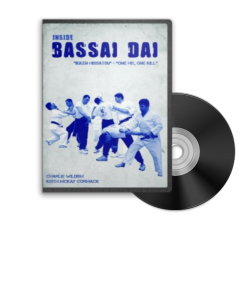Bruce Lee once famously referred to the way that many traditional martial artists train as, “organized despair”. The full quote is reproduced below for you:
“Instead of facing combat in it’s suchness, quite a few systems of martial art accumulate “fanciness” that distorts and cramps their practitioners and distracts them from the actual reality of combat, which is simple and direct and non-classical. Instead of going immediately to the heart of things, flowery forms and artificial techniques (organized despair!) are ritually practiced to simulate actual combat. Thus, instead of being in combat, these practitioners are idealistically doing something about combat”
So, are our katas/forms/patterns “flowery forms and artificial techniques“?
Whilst some undoubtedly are, I don’t believe that all of them are and I think that it helps to look at a historical perspective. When Bruce Lee made that statement, martial arts were very new to the West and they were not as well understood then as they are now.
Traditionally masters would teach a small number of students and the students would have to gain the masters trust before being taught anything of consequence. However, when fully accepted the student would learn a full system of self defence which would include kicks, punches, locks, throws, breaking bones/joints and much more.
So when Karate was introduced into the Okinawan school system, would you want the school kids knowing how to break each others bones?
Funikoshi took Karate to Japan at a time when Japan was building up for war and saw unarmed martial arts as obsolete, except for personal development. Do you think Funikoshi who wanted to gain acceptance for his art challenged this stance?
When the Americans occupied Japan after the war, they banned martial arts. To get permission to train, the Japanese had to play down the martial aspects in favour of sport and self development. This is the version that the GI’s learnt and took back to America.
The Chinese community in Bruce Lee’s day, were very reluctant to teach Kung Fu to non-Chinese. When they did finally open up to the Western public, do you think that they would teach mass audiences their best techniques?
Even Ip Man who taught Wing Chun Kung Fu to Bruce Lee is believed to have held back information from Bruce Lee because Bruce was not a full blooded Chinese.
The bottom line is - a lot of information was held back for one reason or another and in Bruce Lee’s day, many people did not have much clue about what the katas/forms/patterns were for. With Bruce Lee’s very pragmatic approach and with information held back by even his own teachers, can you blame him for seeing it as “organised despair”.
Although so much has opened up today and is continuing to do so all the time, there are still very many people (and whole associations) still caught in trap of not knowing what there katas movements are really for. So we go back to the question, is Kata without realistic bunkai, just organized despair?
Undoubtedly kata WITH realistic bunkai is a much better way to train. It brings the katas to life. However, there is always the old maxim, that before you can control somebody else (in a fight), you must be able to control yourself.
This is where I believe that kata will always be useful. The turns and spins in different directions; landing with co-ordination, speed, power and crispness are excellent ways to learn that control of yourself. You will learn more control and co-ordination with kata than you will by pounding pads or punchbags. You also learn form, structure and principles of movement that you can apply to other things. That is not to say that pounding pads/punchbags is not useful, because obviously it is. However, I believe that kata training in its own right does have something to offer martial artists of all styles, even without good bunkai.
I do not suggest that kata training kata should be pursued at the detriment of other aspects of martial training and I agree with Bruce Lee, that in itself kata does not prepare you for actual combat. However, as part of an fully rounded taining system I do believe that it plays an important part.
Written by Charlie Wildish, 3rd Dan, who trains at Wells Traditional Shotokan Karate Club and Lotus Nei Gong Tai Chi.



